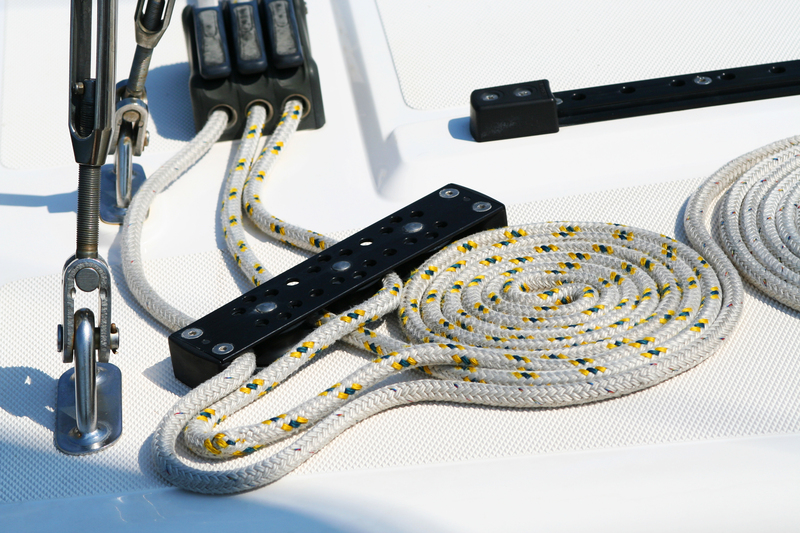Key Steps to Maintain Your Freezer While It's Unplugged
Maintaining a freezer during periods when it's unplugged is crucial for both its longevity and your convenience when it's time to plug it back in. Unplugging your freezer may be necessary for reasons such as moving, seasonal shut-downs, long vacations, or repairs. If left unattended, an unplugged freezer can develop odors, mold, and even internal damage. This comprehensive guide will explore the best practices and key steps to maintain your freezer while it's unplugged.
Why Proper Freezer Maintenance During Unplugged Periods is Important
An inactive freezer isn't a hands-off appliance. Whether you're storing it in a garage, basement, or another seldom-used space, neglecting an unplugged freezer can lead to issues that require costly repairs or replacement. Proper freezer maintenance ensures:
- Prevention of mold and mildew growth
- Minimization of unwanted odors
- Protection from interior and exterior damage
- Extended lifespan of your appliance
- Smooth transition for future use
Below, you'll find a step-by-step plan with all the essential tips for maintaining your freezer while it's unplugged.

Step 1: Thoroughly Empty and Defrost the Freezer
The first and most critical step is to remove all items from your freezer. Leftover food can spoil, create odors, and even attract pests or bacteria during the time your freezer is off.
How to Defrost Your Freezer Safely
- Unplug the appliance. Always unplug the freezer before you start the defrosting process to prevent electrical hazards.
- Remove all food items, shelves, and any removable drawers. Place frozen foods in coolers or dispose of them as necessary.
- Allow ice to melt naturally. Speed up the process by placing bowls of hot water inside and closing the door for short intervals, but avoid using sharp objects to chip away the ice.
- Wipe up melting water immediately to prevent water damage to the appliance or nearby floors.
Step 2: Clean the Interior and Exterior
A complete cleaning is vital to maintaining your unplugged freezer. Leftover spills and food particles can lead to tough odors and bacteria even after defrosting is complete.
- Make a mild cleaning solution: Mix 1 tablespoon of baking soda into 1 quart of warm water.
- Wipe all surfaces including shelves, walls, seals, and door gaskets with a soft cloth or sponge.
- Pay special attention to corners and crevices where debris can hide and cause future problems.
- After cleaning, wipe the freezer dry with a clean towel to eliminate moisture.
Step 3: Dry Everything Thoroughly
Moisture is a major enemy when maintaining a freezer that's unplugged. Any lingering dampness can lead to mold, mildew, and rust.
- Leave the door open for several hours to permit complete air drying.
- If possible, place the freezer in a well-ventilated area or use a fan for quicker drying.
- Double-check all seals, drawers, and bins for any leftover moisture.
Step 4: Prevent Unpleasant Odors and Mold Growth
If you're storing the freezer unplugged for any extended period, odor prevention is essential for easy and hygienic future use.
Tips for Odor Protection
- Keep the freezer door ajar by wedging a towel, foam block, or child-safe door prop. This allows air to circulate and prevents moisture build-up.
- Place a box of baking soda or activated charcoal inside the freezer to absorb ambient odors.
- For additional scent control, add a few sheets of newspaper inside to trap and neutralize lingering smells.
Step 5: Take Steps to Avoid Pests
Unplugged freezers in garages, basements, or outdoor spaces can attract pests if not properly secured.
- Clean up the surrounding area to remove food scraps and rubbish that could lure rodents or insects.
- Inspect the seals and exteriors for cracks or openings that could provide access for small animals.
- Store the freezer upright on a flat surface to maintain balance and make it harder for pests to enter.
Step 6: Protect the Freezer From Damage
The way you store your unplugged freezer can affect both its appearance and functionality in the long term.
Preventing Exterior Damage
- Store your freezer in a dry, cool, and covered environment away from direct sunlight or extreme temperature fluctuations.
- Avoid covering the freezer with airtight plastic, which can trap moisture against the surface--use breathable fabric covers instead.
- Check periodically for signs of dust, corrosion, or physical damage.
Care for Power Cords and Components
- Secure the power cord neatly to prevent tripping or crushing.
- If possible, cover any electrical components with protective caps to avoid dust accumulation.
- Do not store any heavy items on top of an unplugged freezer to prevent warping or dents.
Step 7: Regularly Inspect the Freezer During Storage
Frequent checks reduce the risk of surprises when you need your freezer again. Aim for a simple inspection schedule:
- Inspect monthly for mildew, mold, odors, or pest activity.
- Refresh the baking soda or odor absorbers every month if storing long-term.
- Check door seals and gaskets for flexibility and cleanliness--wipe down as needed.
Step 8: Prepare for Plugging the Freezer Back In
When it comes time to use the freezer again, preparing it properly ensures optimal performance and food safety.
Ready the Freezer for Use
- Wipe down the interior surfaces again to ensure they're fresh.
- Confirm that the freezer is completely dry and free from odor.
- Reinstall shelves and drawers as needed.
- Plug in the freezer and allow it to reach the proper temperature before adding any food.
- Monitor it for the first 24 hours to confirm normal operation.
Additional Tips for Freezer Maintenance While Unplugged
- Avoid storing your unplugged freezer near chemical products (like paints or cleaning agents) to prevent chemical reactions with exterior surfaces.
- Keep pets and children away from the appliance by blocking access.
- If you live in a humid climate, silica gel sachets can help absorb extra moisture inside the unit.
- For chest freezers, consider placing wooden blocks under the corners to encourage air flow beneath.

FAQs on Maintaining an Unplugged Freezer
Can I cover my unplugged freezer with a plastic tarp?
No, it's better to avoid airtight covers like plastic tarps. Moisture may become trapped and promote rust or mold. Instead, use a breathable, lightweight fabric for dust protection.
How do I keep the freezer door open safely?
Use a non-slip door stop, rolled-up towel, or child-proof wedge to prop the door ajar by about an inch. This prevents accidental closure and allows for necessary airflow.
Is there a risk of pests if the freezer is unplugged?
Yes, especially if stored outdoors or in garages. Always inspect seals and the storage area, and keep the appliance off the floor if possible.
Conclusion: Keep Your Freezer in Top Condition While Unplugged
Whether you're unplugging your freezer for a move, repairs, or to save energy during extended absences, taking a little time to follow these steps will help maintain your freezer in optimal condition. From thorough cleaning and drying to regular inspections, proactive care ensures your freezer is always ready to serve you--efficiently, hygienically, and without unpleasant surprises.
Remember, these key steps for freezer maintenance while unplugged not only protect your appliance but also your peace of mind--setting you up for easy, trouble-free use whenever you're ready to get your freezer humming again.
For more detailed tips on appliance care, energy saving, and seasonal maintenance, explore our other articles and expert resources.



